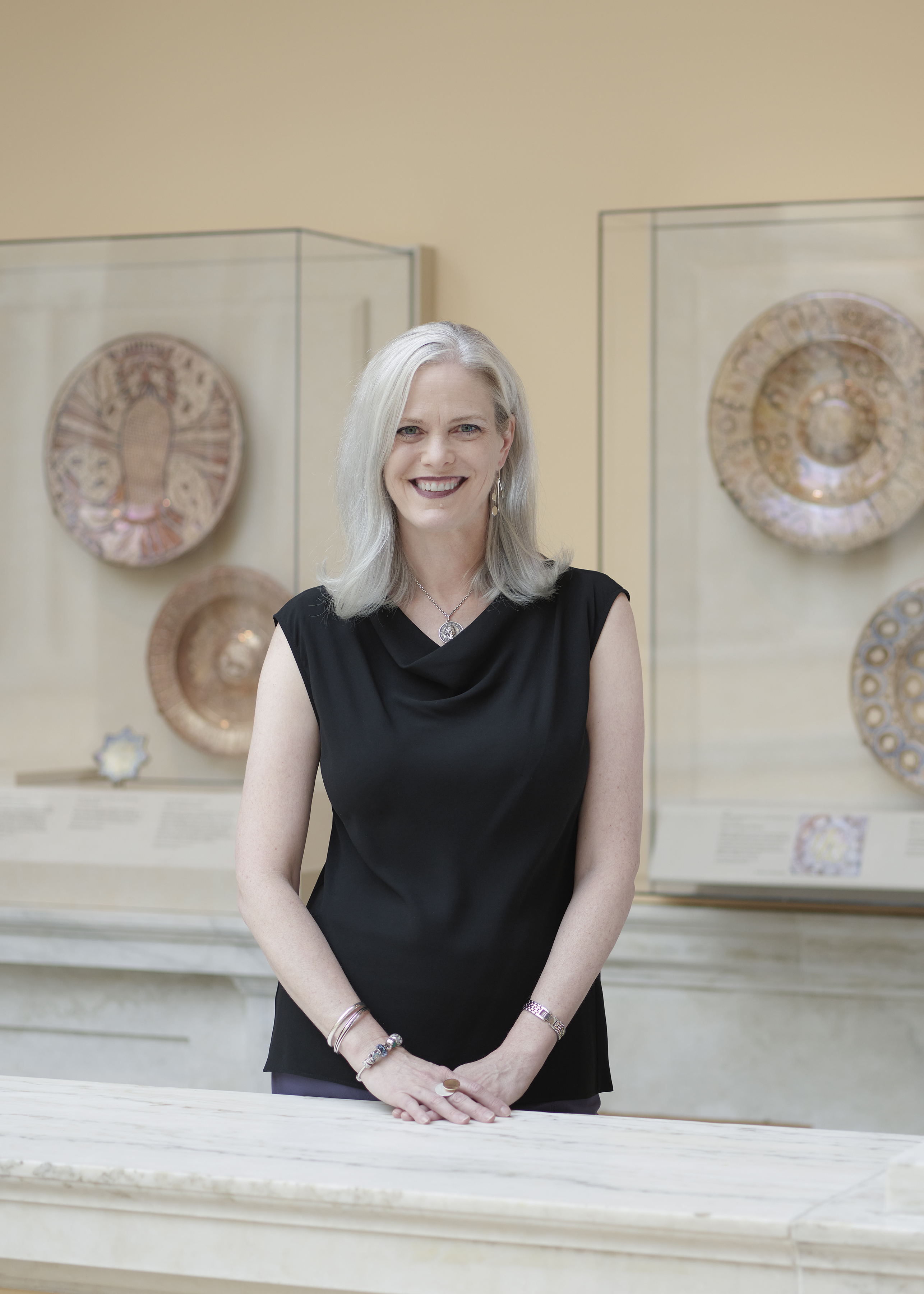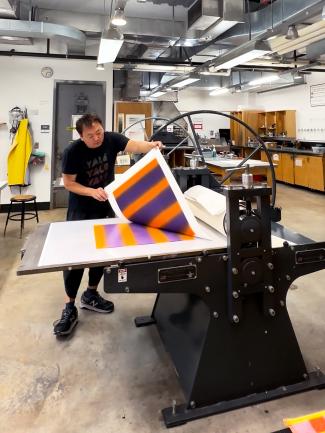In Memoriam: Julia Alexander (1967–2025)

Image courtesy of the Walters Art Museum
We were heartbroken to learn that Julia (Marciari) Alexander passed away suddenly on Sunday, May 4. A beloved colleague, mentor, and friend, Julia was a cherished member of the Yale Center for British Art (YCBA) and the Yale University community for many years. She was 57.
Amy Meyers, director of the YCBA from 2002 to 2019, remembers Julia as a consummate professional: “Exceptionally accomplished, erudite, and collaborative in the loveliest of ways, Julia enhanced and energized the culture of the Center with her positive spirit. She encouraged the highest standard of scholarship and museum practice in every project that she conceived and stewarded. Julia built national and international partnerships that have had a lasting legacy. A true institution-builder, she was destined to lead the field of art history in important ways, and the Center was privileged to serve as her testing ground.”
Julia completed her PhD in the history of art at Yale University in 1999, writing her dissertation under the direction of Judith Colton (now professor emerita in the history of art), who became a lifelong friend. Judith remembers Julia as someone who “loved life and lived it magnificently.” Julia began her remarkable museum career at the YCBA, which she joined as assistant curator of paintings and sculpture in 1997, while still completing her dissertation. Her brilliance, warmth, and dedication shone through from the beginning. She became the museum’s associate director of programmatic affairs in 2002 and associate director for exhibitions and publications in 2006. In these roles, Julia shaped many of the museum’s most celebrated exhibitions and publications, nurtured students with genuine care, and helped shape the museum’s intellectual life.
With her YCBA colleague Malcolm Warner, Julia co-curated This Other Eden: British Paintings from the Paul Mellon Collection at Yale, which traveled to three Australian museums in 1998. She played a key role in the full reinstallation of the museum’s collection in 1999. In 2002, she partnered with the National Portrait Gallery in London to co-curate Painted Ladies: Women at the Court of Charles II with Catharine MacLeod, now senior curator, seventeenth-century collections, at the NPG. “It was the first big exhibition for both of us,” Catharine recalls. “We learned so much from the experience and from each other. Her knowledge and judgment transformed the project, and her positivity and practicality overcame all obstacles. We established a deep, lifelong friendship, based on shared interests, kindred spirits, and so much laughter. Her loss to the museum world and to those who loved her is incalculable.”
Catherine Roach (Yale BA 2002), associate professor of art history at Virginia Commonwealth University, remembers having had “the good fortune” of taking Julia’s undergraduate seminar “Women, Art, and Society.” “Her teaching combined luminous intelligence with a keen sense of humor, an openness to both the profundity and absurdities of the past,” Catherine says. “It showed that the history of art was an adventure well worth taking. I use things I learned from her in my own teaching to this day.”
Julia inspired students and coworkers alike. As former YCBA colleague Cassandra Albinson, now Margaret S. Winthrop Curator of European Art at Harvard Art Museums, recalls, “Julia was the ultimate connector of people, always encouraging friendships and laughter. Many arrived in New Haven as students or new Yale employees and were warmly welcomed by Julia into her extended family of friends, associates, and collaborators. One always felt special around Julia—seen, heard and embraced.”
Julia helped bring to fruition many important projects during her time at the YCBA, including Britannia and Muscovy: English Silver at the Court of the Tsars (2006), Canaletto in England: A Venetian Artist Abroad, 1746–1755 (2006), Paul Mellon’s Legacy: A Passion for British Art (2007), and Art and Emancipation in Jamaica: Isaac Mendes Belisario and His Worlds (2007). Her support of these wide-ranging initiatives reflected a deep understanding of the museum’s mission and a rare ability to steward complex projects with insight and care.
“British art was only one of the many beneficiaries of Julia’s exuberant advocacy,” says Tim Barringer, Paul Mellon Professor of the History of Art at Yale University. “In the classroom and in the galleries, Julia took joy in inspiring and mentoring generations of young art historians. To the permanent benefit of our field, she mobilized formidable resources, personal and institutional, to support emerging scholars and young curators. Her legacy, most visible in her own achievements as a museum director and research leader, also lies in the manifold successes of those she helped and guided.”
Julia taught numerous courses in the history of art during her tenure at the YCBA, leaving a lasting impact on her students. “I vividly remember her advising the art history majors to work on earlier periods, counsel I very much took to heart! When I shared my dreams of a curatorial career, she offered candid and frank advice that I have never forgotten,” says Adam Eaker (Yale BA 2007), associate curator of European paintings at the Metropolitan Museum of Art and a former YCBA Student Guide. “As I process this heartbreaking news, I’m struggling to imagine my professional landscape without Julia in it, as an exemplar of everything a museum leader should be.”
Julia left Yale in 2008 to become deputy director for curatorial affairs at the San Diego Museum of Art. She joined the Walters Art Museum in Baltimore in 2013, serving as its fifth executive director—and the first woman to hold the position. In fall 2024, she was appointed president of the Samuel H. Kress Foundation, an organization dedicated to the study and preservation of European art and heritage in the United States.
Born in Memphis, Tennessee, in 1967 and raised in Claremont, California, Julia earned her BA in art history and French from Wellesley College and her MA in French literature from New York University before coming to Yale. She recently served as president of the Association of Art Museum Directors’ board of trustees and was actively involved with organizations including the Greater Baltimore Cultural Alliance, Maryland Citizens for the Arts, and the William M. B. Berger Prize for British Art History.
Julia will be deeply missed. As her former YCBA colleague Malcolm Warner recalls, “Julia had such a gift for remembering. When we’d meet she’d remind me, in living detail, about the goings-on and fun we had when we worked together at the YCBA.” Julia will be remembered not only as a superb scholar and dedicated advocate for the arts, but also as a treasured friend, mentor, and colleague. She brought joy to her work and to those around her, and she had an extraordinary ability to inspire. Our hearts go out to her family and the countless individuals whose lives she touched with grace and care.
Julia is survived by her two children, Jack and Beatrice (Bede); her mother, Catharine Alexander; her former husband, Dr. John Marciari; and her sister, Kitty.


